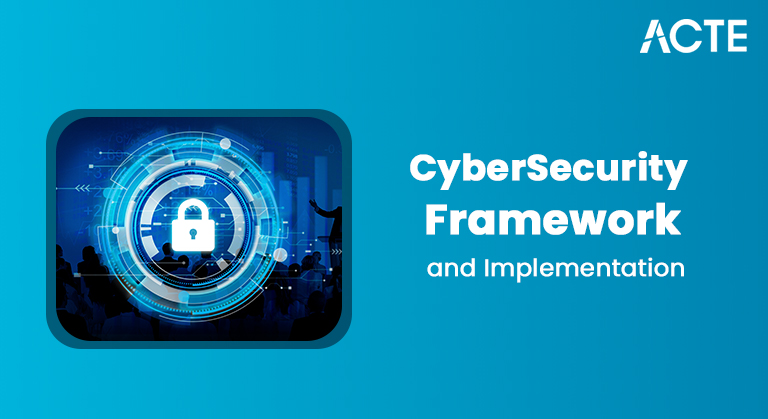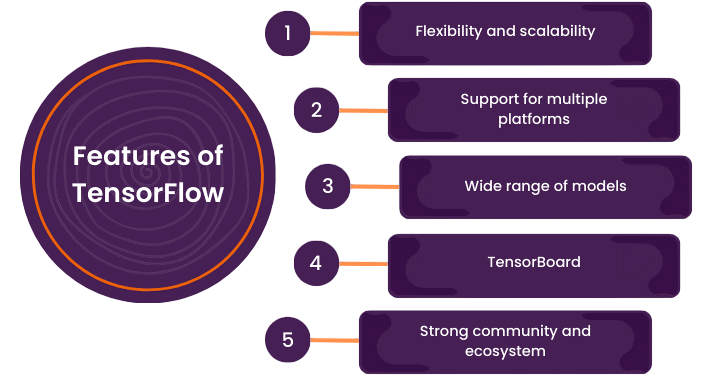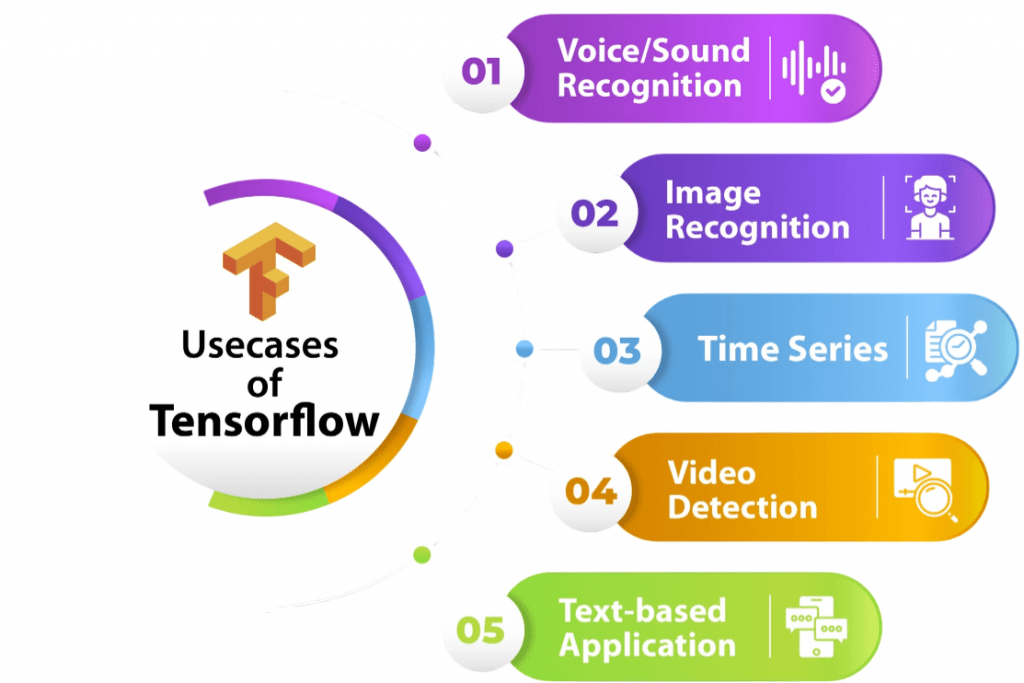
- Introduction to Deep Learning Frameworks
- What is TensorFlow?
- What is Keras?
- History and Evolution
- Ease of Use and Flexibility
- Performance and Speed
- Model Building and Training Comparison
- Compatibility and Integration
- Community and Documentation
- Use Cases and Applications
- Summary and Final Verdict
Introduction to Deep Learning Frameworks
Deep learning frameworks are essential tools that enable researchers, data scientists, and developers to design, build, train, and deploy deep neural networks efficiently. Popular frameworks like Keras and TensorFlow abstract away many low-level operations such as tensor manipulation, automatic differentiation, and GPU acceleration, allowing users to focus on developing and optimizing their models. To build foundational and advanced skills, explore Machine Learning Training. In recent years, deep learning has revolutionized fields such as computer vision, natural language processing, speech recognition, and more. This surge has been largely supported by the availability of powerful and versatile frameworks. Among them, TensorFlow and Keras have emerged as two of the most popular and widely used frameworks, each bringing its own philosophy, strengths, and community backing. This guide explores these two frameworks in depth, helping you understand their origins, design principles, strengths, weaknesses, and how to choose between them based on your specific needs.
Ready to Get Certified in Machine Learning? Explore the Program Now Machine Learning Online Training Offered By ACTE Right Now!
What is TensorFlow?
TensorFlow is an open-source deep learning framework developed and maintained primarily by Google Brain. Released in 2015, it has become one of the leading tools for machine learning and deep learning applications. TensorFlow is designed for flexibility and scalability, capable of running on various platforms ranging from mobile devices to large-scale distributed systems. To complement this platform versatility with interpretable modeling techniques, exploring Decision Trees in Machine Learning reveals how tree-based algorithms use hierarchical splits to classify data or predict outcomes offering visual clarity, low computational cost, and strong performance on structured datasets across diverse deployment environments. It provides a comprehensive ecosystem including tools for model building, training, deployment, visualization (TensorBoard), and serving.

Key features of TensorFlow include:
- A dataflow graph-based computation model, which allows for efficient distributed computing.
- Support for CPUs, GPUs, and TPUs (Google’s specialized tensor processing units).
- A rich set of APIs in Python (primary), C++, JavaScript, and other languages.
- TensorBoard visualization tools for model inspection and debugging.
- Support for various ML paradigms beyond deep learning, such as reinforcement learning.
What is Keras?
Keras is a high-level neural networks API, originally developed by François Chollet and released in 2015. It was designed to enable fast experimentation and easy model prototyping by providing an intuitive and user-friendly interface. Initially, Keras acted as a wrapper supporting multiple backend engines such as TensorFlow, Theano, and Microsoft Cognitive Toolkit (CNTK). However, since TensorFlow 2.0, Keras has been integrated tightly into TensorFlow as its official high-level API, known as tf.keras. To complement this evolution in deep learning frameworks with foundational modeling techniques, exploring Pattern Recognition and Machine Learning reveals how statistical, structural, and neural approaches are used to identify patterns enabling systems to classify data, extract features, and adapt intelligently across domains like computer vision, healthcare, and seismic analysis.
Key attributes of Keras:
- User-friendly and simple API for Building and Training Comparison neural networks.
- Modular and extensible architecture.
- Focus on ease of use, minimalism, and readability.
- Seamless integration with TensorFlow’s ecosystem.
- Wide adoption in academia and industry for prototyping.
History and Evolution
TensorFlow History
- TensorFlow’s development started at Google Brain and was inspired by its predecessor, DistBelief, an internal deep learning system.
- TensorFlow was open-sourced in November 2015.
- It initially used a static computational graph (declarative programming), meaning the graph was defined and compiled before execution.
- TensorFlow 2.0, released in 2019, introduced eager execution by default, making it more intuitive and Pythonic.
- Over the years, TensorFlow expanded with tools like TensorFlow Lite for mobile, TensorFlow Extended (TFX) for production pipelines, and TensorFlow Serving for model deployment.
Keras History
- Keras was created to democratize deep learning with a focus on simplicity.
- Initially, Keras was backend-agnostic, supporting multiple engines.
- In 2017, Google announced integration of Keras into TensorFlow, which was completed with TensorFlow 2.0.
- Since then, tf.keras has been the recommended high-level API for TensorFlow, combining Keras’s ease of use with TensorFlow’s power and scalability.
- Low-level API: Build custom layers, operations, and control flow.
- Keras API: For easy model building with layers and modules.
- Estimator API: High-level abstractions for scalable training and evaluation, often used in production.
- Comprehensive official documentation and tutorials.
- Active forums, GitHub repositories, and Stack Overflow presence.
- Frequent updates and new features.
- Conferences and workshops globally.
- Many third-party libraries and tools are built around it.
- Clear, concise official documentation.
- Numerous tutorials for beginners.
- Community contributions including custom layers and models.
- Strong adoption in academia, making many research models available in Keras.
- Production ML systems require scalability and robustness.
- Training on large datasets across distributed clusters.
- Applications involving complex custom architectures.
- Mobile and embedded AI via TensorFlow Lite.
- Research and development with flexibility for innovation.
- Examples include Google Translate, Google Photos, and many other AI-powered Google services.
- Rapid prototyping and experimentation.
- Educational purposes and tutorials.
- Standard supervised learning tasks like image classification, NLP, and time series.
- Small to medium-scale production where ease of use is prioritized.
- Many research papers provide Keras code examples due to its simplicity.
To Explore Machine Learning in Depth, Check Out Our Comprehensive Machine Learning Online Training To Gain Insights From Our Experts!
Ease of Use and Flexibility
TensorFlow has changed a lot, shifting from a complicated framework with static graph methods to a more user-friendly platform. Before version 2.0, developers faced issues with long syntax and detailed graph definitions, which made learning difficult. The launch of eager execution and tf.keras in TensorFlow 2.0 greatly simplified model development. It allowed developers to work with more intuitive Python-based workflows while still offering powerful customization for advanced users. Alongside TensorFlow, Keras stands out as an easy-to-use deep learning library with a simple, modular API that hides technical difficulties. Its design lets users easily change components and provides simple functions for preprocessing, training, and evaluating models. To complement these high-level frameworks with scalable cloud-based solutions, exploring An Overview of ML on AWS reveals how Amazon’s machine learning services enable developers to build predictive models, automate workflows, and deploy intelligent applications across industries like healthcare, finance, and retail with robust infrastructure and minimal overhead. This makes machine learning easier for beginners and speeds up prototyping. Both frameworks aim to make machine learning accessible by blending advanced features with user-friendly designs. This helps developers and data scientists build complex neural network models more easily and efficiently.
Performance and Speed
TensorFlow is a powerful machine learning framework created for scalability and efficiency in various computing environments. Its strong architecture supports fast acceleration technologies, including GPU and TPU processing, which allow for very quick training and efficient computation. The framework’s XLA compiler also improves computational efficiency. Additionally, TensorFlow Lite and TensorFlow.js make it easier to deploy models on mobile and web platforms. For foundational and advanced skills, explore Machine Learning Training. Importantly, Keras, now part of TensorFlow, benefits from these performance features and supports smooth GPU and distributed training with little difference in speed. For developers who want detailed performance control, TensorFlow’s direct APIs offer advanced optimization options. This makes the framework suitable for both cutting-edge research and production-grade machine learning systems.
Looking to Master Machine Learning? Discover the Machine Learning Expert Masters Program Training Course Available at ACTE Now!
Model Building and Training Comparison
TensorFlow
TensorFlow provides multiple ways to build models: from low-level operations for granular control to high-level APIs for rapid prototyping. To complement this flexibility with a comparative perspective, exploring Keras vs TensorFlow reveals how Keras simplifies model development with a user-friendly interface, while TensorFlow offers broader functionality and scalability making the choice between them dependent on project complexity, dataset size, and developer experience.
Training loops can be defined manually for full customization or managed via Keras’s .fit() method.
Keras
Keras is tightly integrated into TensorFlow as tf.keras but also interoperates with other tools in the TensorFlow ecosystem. It supports exporting models in TensorFlow’s SavedModel format for deployment. Standalone Keras can use other backends, but this is less common now.
Community and Documentation
TensorFlow
TensorFlow has a large and active community backed by Google. It has:
Keras
Keras also enjoys a vibrant community. Since it is integrated into TensorFlow, it benefits from TensorFlow’s ecosystem.
Preparing for Machine Learning Job Interviews? Have a Look at Our Blog on Machine Learning Interview Questions and Answers To Ace Your Interview!
Use Cases and Applications
TensorFlow Use Cases
TensorFlow is widely used in: image recognition, natural language processing, and predictive analytics thanks to its scalability and extensive ecosystem. To complement these technical applications with career-level insights, exploring Machine Learning Engineer Salary reveals how expertise in frameworks like TensorFlow, along with skills in data modeling, algorithm design, and deployment, can lead to lucrative roles often exceeding ₹8 LPA in India and reaching over $120K annually in global markets.

Keras Use Cases
Keras is ideal for:
Summary and Final Verdict
In the world of deep learning frameworks, developers and data scientists see Keras and TensorFlow as strong yet complementary tools, each offering unique benefits. TensorFlow provides a complete and scalable solution that maximizes flexibility and performance, making it suitable for complex models and large-scale deployments. For foundational and advanced skills, explore Machine Learning Training. With TensorFlow 2.0, the framework has improved usability by making Keras its default high-level API. On the other hand, Keras focuses on simplicity and user experience, which makes it especially appealing for beginners, rapid prototyping, and education. This integration allows Keras to use TensorFlow’s powerful backend while keeping an easy-to-use interface, effectively connecting advanced computing abilities with user-friendly design. If you are new to deep learning, starting with Keras (tf.keras) is recommended for faster learning and development. For advanced use cases requiring fine-grained control or distributed training, TensorFlow’s lower-level APIs provide the necessary power. Ultimately, since Keras and TensorFlow now work together as part of TensorFlow 2.x, choosing its Keras API combines the best of both worlds.



